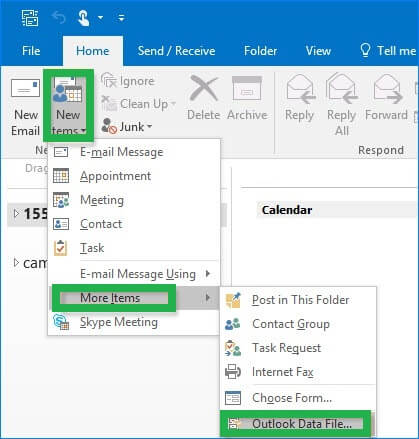

In the following section, we are going to start in this type of applications.
 ContactItem: It represents a contact in the Contact folder. TaskItem: It represents a task to be performed within a specified time frame. AppointmentItem: It represents a meeting, a one-time appointment, schedule appointment or a meeting in the Calendar folder. MailItem: It represents an email message. Remark: This object is obsoleted and, in substitution, you should use Folder object instance of MAPIFolder. MAPIFolder: It represents a folder that contains emails, contacts, appointments, etc. Inspector: It represents a window to display an item, such as an email message, a task, an appointment, etc. Explorer: It represents a window to display the folder's contents, such as emails, message, tasks, appointments, etc. This object is the starting point to reach the other objects of the model. Application: It represents the Outlook application and is the highest-level object in the model. This is the starting point when we want to create an Outlook Add-in and it's important to understand the meaning of these objects. In this tutorial, we are going use Outlook 2013 as a case study and Visual Studio 2015.
ContactItem: It represents a contact in the Contact folder. TaskItem: It represents a task to be performed within a specified time frame. AppointmentItem: It represents a meeting, a one-time appointment, schedule appointment or a meeting in the Calendar folder. MailItem: It represents an email message. Remark: This object is obsoleted and, in substitution, you should use Folder object instance of MAPIFolder. MAPIFolder: It represents a folder that contains emails, contacts, appointments, etc. Inspector: It represents a window to display an item, such as an email message, a task, an appointment, etc. Explorer: It represents a window to display the folder's contents, such as emails, message, tasks, appointments, etc. This object is the starting point to reach the other objects of the model. Application: It represents the Outlook application and is the highest-level object in the model. This is the starting point when we want to create an Outlook Add-in and it's important to understand the meaning of these objects. In this tutorial, we are going use Outlook 2013 as a case study and Visual Studio 2015. 
NET Framework that lets us extend and customize the Microsoft Office products in (versions 2003 and later). Visual Studio Tool for Office (VSTO) Add-in is a toolset available in.







 0 kommentar(er)
0 kommentar(er)
